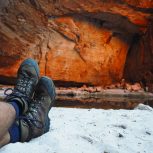How to prepare your feet for a long hike
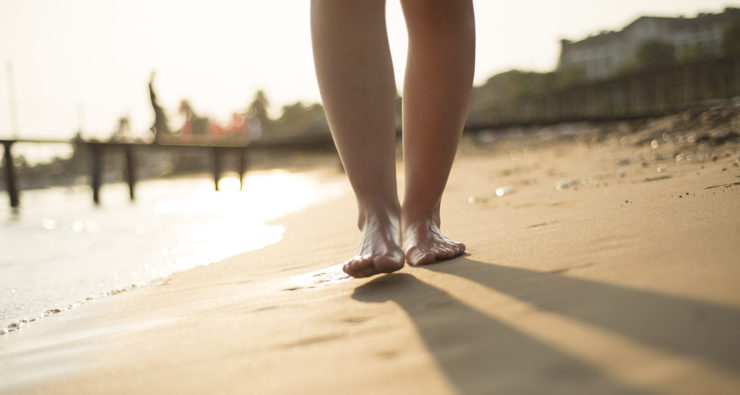
How to prepare your feet for a long hike
Posted on
An inconvenient truth of a long walk is that 30% of us experience foot problems during the walk or afterwards. The good news is that a little extra planning before setting out on your trek can make all the difference in avoiding sore feet, or even worst injuries!
We’ve already got a few resources on The Walking Blog on how to look after your feet…
however, here we asked the feet experts at Central Podiatry Group, senior podiatrists, Lorraine and Siobhan, who happen to be some of our regular walkers; so you know they understand first-hand a walker’s needs. They’ve been kind enough to share a personalised checklist and preparation plan to help minimise any risks on your next walk.
Footwear
Check the size, width, depth, flex zone of your shoes. Go for training walks and note any red areas on your feet after you take your shoes off. Take a deeper look at our The Walking Blog guide; How to break in new hiking boots & How to choose hiking boots.
Socks
Try different sock combinations during your training as this is very unique to each person and footwear. Options to try, include; thin socks, thick socks, wool, bamboo, toe socks, double socks.
Nails and Callous
Before your trip ensure your nails are nice and short. If you have callous or corns have them reduced 1-3 weeks prior to the hike so the skin can re-toughen just enough. A podiatrist can do this professionally for you if required.
Blisters
Know your hot spots before your hike – prevention is best – a podiatrist can discuss with you the use of felt, Compeed, fixomull, Silipos, hikerswool or Engo blister patches that can be applied to the shoe. Also how to treat blisters when they occur on a hike.
Sprains, strains and muscle fatigue
Address these before a hike and get individualised advice on stretching and strengthening exercises and which type of tape, rigid or kinesiology tape, to use and how to apply it for your specific sprain or strain by your podiatrist or other health care worker.
Heel/Arch Pain, Plantar Fasciitis, Burning feet, Forefoot pain, Neuroma, Bursitis and all other foot Aches and Pains
These should be Addressed before your hike with your podiatrist or other health professional. This can include Manual techniques like Mobilisation, massage, dry needling or Stretches and strengthening exercises, footwear advice and modification, orthoses or in-shoe padding and strapping techniques specific for the hike.
Footcare items to take with you on walks
This can vary depending upon your past and present issues and foot type.
But may include;
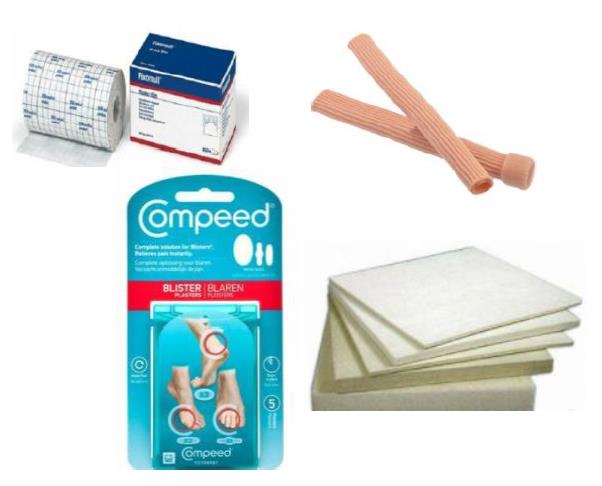
- Fixomull 10cm
- Rocktape/k-tape(Kinesiolgy tape) 5cm
- Rigid/ zinc oxide strapping tape
- Compeed
- Silipos digitube 15cm
- Chiropody/podiatry felt 5mm (approx 10x20cm)
- Antiseptic
- Photo of any stretches, exercise, taping techniques etc
Increase strength and agility
A well-rounded series of exercises can help you prepare for an upcoming walk. These may include exercises to strengthen the intrinsic foot muscles, leg or core muscles or stretching exercises depending on your foot type and current issues.
Some general exercises may include;
- Plantar fascial release
- Calf and hamstring stretches
- Calf raises
- Pelvic floor/core exercises
- Intrinsic foot exercises
- Step-ups and squats
Plantar Fascia Release
Use a ball or rolling pin etc and slowly and gently roll it from heel to toes and back again several times. The slower the better, no more than 4/10 on the pain scale.
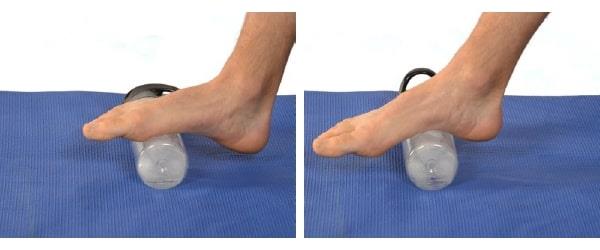
CALF AND HAMSTRING STRETCHES
Gastrocnemius Stretch
Place one foot forward and one backward keeping both feet pointing forward. Make sure your back leg (the one you are stretching) is straight. Lean forward at the back ankle and forward knee. Keep your back heel on the ground. You should feel a stretch in your back calf.
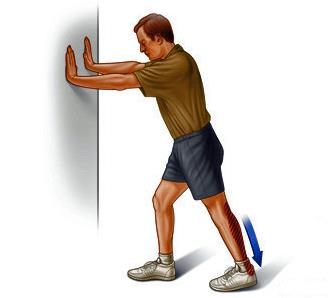
Soleus stretch
This is a very simple stretch you can do while standing. This stretch targets the Soleus muscle on the side and lower part of the calf as well as the Achilles tendon in the lower leg.
- Standing tall, take a half step forward
- Keep your weight evenly distributed on both feet and slowly bend your knees and sink down toward the ground
- Keep your heels on the ground
- You will feel a stretch in the back leg, just above the heel
- Continue to sink down slowly with your hips to deepen the stretch
- Hold this stretch for about 30 seconds and change sides
By bending your knee, this stretch targets the Soleus and Achilles tendon rather than the Gastrocnemius muscle.
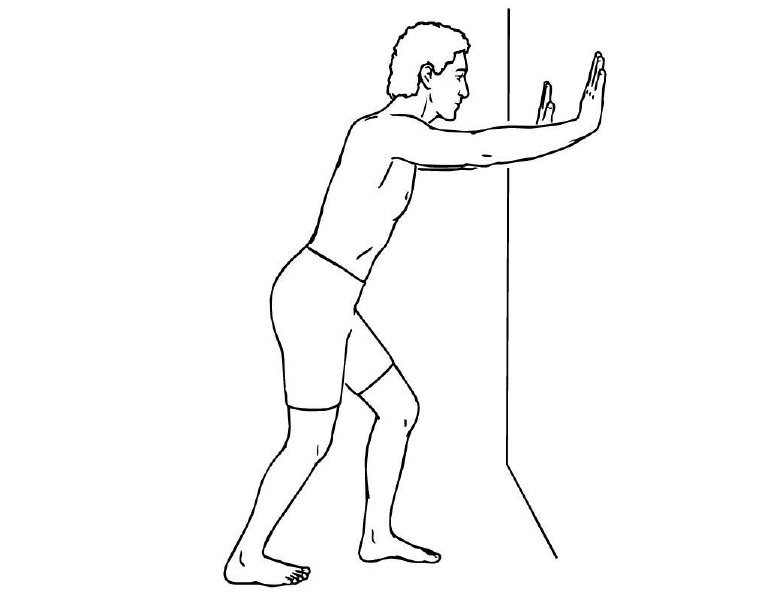
Hamstring Stretch
- Lie down on your back and bring your leg up while keeping it as straight in the air as possible. Use a rigid strap eg a belt, tie-down strap or luggage strap to place around the foot
- Pull the strap (down and towards you). Keep the opposite leg on the ground unless you have back issues then bend the opposite knee)
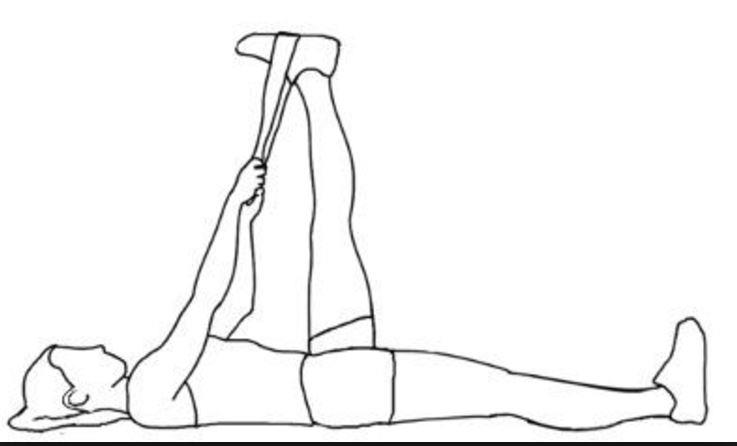
All these need to be shown how to do properly to prevent injury and creating new problems.
What does a podiatrist do?
The above provides a rough plan, however, the benefits of a podiatrist are all about the personalised plan they can provide for your exact condition and based on the type of activity you want to condition for. Some topics a podiatrist can discuss with you include:
- Biomechanical assessment
- Footwear analysis and modification
- How to apply kinesiology tape for strains, muscle fatigue and sore joint
- Rigid strapping
- Application for injuries
- Address foot hotspots and issues
- Tend to problematic nails and thickened skin
- Advise pre-trek foot exercises to prepare
- Hints and tips to use during your trek
Do You Hail from WA? Lorraine Briggs and Siobhan Vosnacos have developed a specific pre hiking assessment which looks at most aspects above and can prepare an individualised plan just ask for a hiking pre-assessment consultation when you book an appointment at;
Ardross Central Podiatry Group – Lorraine Briggs and Siobhan Vosnacos
www.centralpodiatrygroup.com.au
(08) 9364 7242
Mandurah Podiatry Clinic – Lorraine Briggs
www.mandurahpodiatry.com.au
(08) 9535 9143
Bindoon and Gingin First Step Podiatry – Siobhan Vosnacos
www.firststeppodiatry.com.au
0407 042 122


